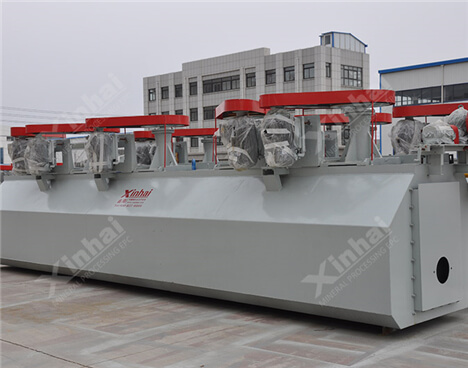Fluorite, commonly known as fluorite or fluorspar, is a valuable industrial mineral with a wide range of applications. It is a colorful mineral that often exhibits stunning fluorescence under ultraviolet light, making it not only a practical resource but also a visual delight for collectors and enthusiasts. To harness its economic potential, fluorite undergoes a beneficiation process to purify and concentrate its valuable components. In this article, we will delve into the comprehensive fluorite ore beneficiation process, exploring the steps involved, the techniques employed, and the importance of fluorite in various industries.
Fluorite Ore Characteristics
Before diving into the beneficiation process, it is essential to understand the characteristics of fluorite ore. Fluorite ore typically contains a variety of impurities, such as calcium, silica, and sulfur, which need to be removed to obtain high-purity fluorite concentrates. The ore's mineral composition, grade, and structure play a significant role in determining the beneficiation approach.
Crushing and Grinding
The first step in the fluorite beneficiation process is to reduce the ore to a suitable particle size through crushing and grinding. This step prepares the ore for subsequent beneficiation operations and ensures that the valuable fluorite minerals are liberated from the gangue minerals.

Froth Flotation
Froth flotation is the most widely used method for fluorite beneficiation. In this process, a mixture of water, chemicals, and air bubbles is introduced to the ground ore pulp. The hydrophobic fluorite particles attach to the air bubbles and rise to the surface as a froth, while the hydrophilic gangue minerals remain in the pulp. The froth is then collected and further processed to obtain a high-grade fluorite concentrate.
pH Adjustment and Reagent Addition
The success of froth flotation relies on controlling the pH level and adding appropriate reagents. Lime (calcium oxide) is often used to adjust the pH to create optimal conditions for the separation of fluorite from gangue minerals. Collectors and frothers are added to enhance the attachment of fluorite particles to air bubbles.
Concentrate Dewatering
Once the fluorite concentrate is collected, it is dewatered to remove excess water. This can be achieved through processes like filtration or centrifugation. Dewatering increases the concentration of fluorite in the final product.
Tailings Disposal
The tailings, which consist of the gangue minerals and residual reagents, are disposed of in an environmentally responsible manner to prevent contamination and ensure the sustainability of the beneficiation process.
Final Product Preparation
The high-grade fluorite concentrate obtained from the flotation process is then further processed to meet specific industrial requirements. This may involve additional grinding, sizing, and chemical treatment to achieve the desired product specifications.
Applications of Fluorite
Fluorite finds extensive use in various industries due to its unique properties:
Metallurgy: Fluorspar is used as a flux in steelmaking and aluminum production to reduce the melting point of raw materials.
Chemical Industry: It serves as a source of fluorine in the manufacture of hydrofluoric acid and other chemical compounds.
Ceramics and Glass: Fluorite is used as a flux in ceramic and glass production, improving the transparency and stability of glass products.
Optics: High-purity fluorite crystals are employed in lenses and prisms for optical instruments due to their excellent light dispersion properties.
Pharmaceuticals: Fluorine-containing compounds derived from fluorite play a vital role in the pharmaceutical industry.
The beneficiation of fluorite ore is a complex process that involves several stages, from ore characterization to final product preparation. This process is vital in unlocking the economic potential of fluorite and making it available for various industrial applications. The high demand for fluorite in industries such as metallurgy, chemicals, optics, and ceramics underscores its significance in modern technology and manufacturing. As we continue to explore innovative techniques and sustainable practices, the future of fluorite beneficiation looks promising, ensuring a steady supply of this remarkable mineral for diverse industries worldwide.